In a different era, before the sports car became the supercar and the supercar begat the hypercar, I’d have started this column by warning that driving the McLaren 720S will require a certain tolerance for physical violence: repeated whiplash, for starters, or the ability to withstand NASA-level g-forces all the way up and all the way down the rapid sweep of the electronic gauges. In other words, you’ll have to rather like the sensation of instantaneously transforming passing objects into a living Jackson Pollack painting.
And yes, the 720S is laughably – hypersonically? – fast. When the boil’s on, this beast will gladly test your body’s pliability. But speed alone doesn’t make a car great, or even pretty good for that matter. And besides, today we’re beyond spoiled for choice in that department. Computerization and modern mechanical advances like dual-clutch transmissions – hell, even old-school torque converter automatics – have fundamentally changed even the lowliest of new cars.
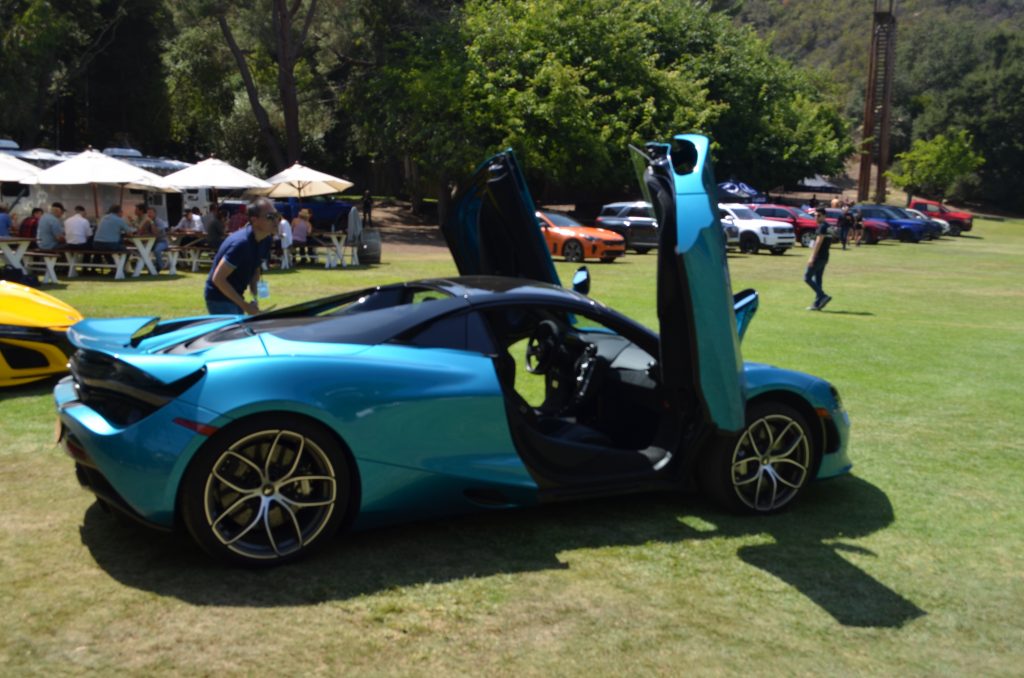
Skeptical? Think about this: the current Honda Accord Sport – a cavernous, dead-reliable family sedan – will get you to 60mph in five-and-a-half seconds. When I was a kid, that was Corvette or 300ZX Turbo territory – legitimate sports cars. And on top of that, it drives so well and is so practical and well-made to boot, that whether you’re loafing along with four passengers, its chassis soaking up our embarrassingly shit infrastructure or barreling down a highway on-ramp at triple digit speeds, it’s hard to make the practical case for a whole lot more car. There are late 20th-century Porsches and Ferraris that would be given a run for their money by today’s everyday transport. Hell, a BMW X4 M – family transport for sure – can accomplish the 60mph feat in a hair over three seconds.* And that’s an SUV.
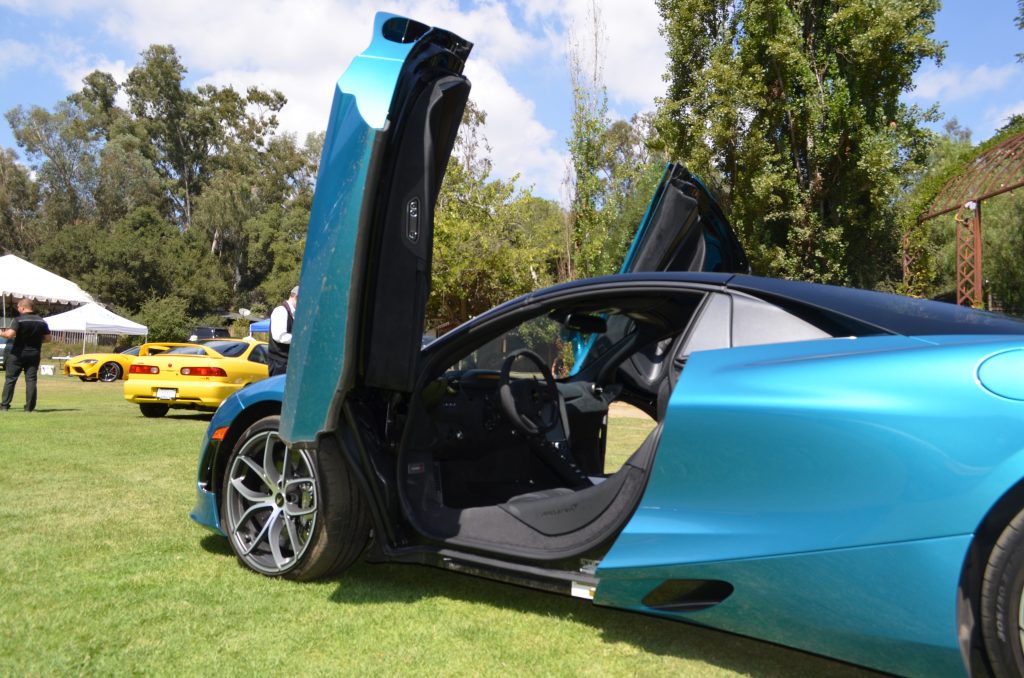
Which is all to say that this time, my friends – this chaotic, third decade of the twenty-first century – contains more technological development than at any time in history, save for when cars were still a novel replacement for a horse and buggy. So for a car like the McLaren 720S to be successful, forget fast. Fast is but a mere prerequisite. As are crazy swoops and curves, those dihedral butterfly doors and loud, maniacal noises from a free-revving, mid-mounted twin-turbo V8. Today, a supercar must do much more to justify its existence than be fast and a shade of outrageous. It must also be good. Good at the drudgery of commuting, good at entering and exiting parking lots, good at creeping along on crumbling asphalt.
We can trace this expectation of civility back to one sports car in particular: the 1990 Acura NSX. When the NSX came online, it drew a line in the sand from the past to what we consider the “modern era” for exotic sports cars. Around town, it drove kind of like any Honda: smooth, silent, reliable. Then, when you hammered the go pedal? Well, that free-revving, 3.0L VTEC V6 just revved and revvvved, the snick-snick of a perfectly balanced clutch and shifter and sublime chassis tuning made the NSX feel phenomenally balanced in all situations. Honda’s trademark reliability and excellent build quality – despite the at-the-time new-to-Honda all-aluminum construction – set the bar very high. Suddenly, the European exotics, even Porsche 911s, felt kind of compromised.
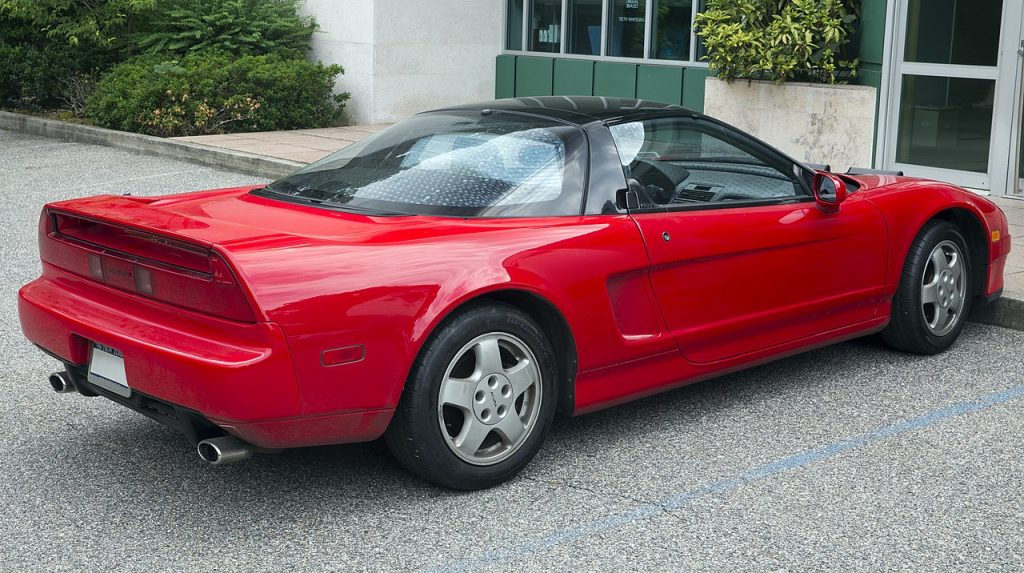
After NSX, exotics were expected to be a study in extreme contrast: beast mode when you wanna put the hammer down, docile as a newborn kitten when you’re just puttering about town. And happily, juggling these inverted priorities is where the 720 truly shines. While the Lambo Huracán and Ferrari 488 (recently replaced with the F8 Tributo, which we have yet to drive – Hi Ferrari! Call me baby) are both modern supercars that don’t mind the drudgery of stop-and-go traffic quite like their forebears, when you’re driving either of them in heavy traffic conditions (or in LA, “traffic”) both give the impression of a wild beast in a cage, chomping at the bit to roam free again.
Not so with the 720S. The McLaren can be so docile when just puttering around like – well, like a sane person – that you almost forget you’re strapped inside a land-bound missile. Its magnetic shocks work the same wonders here they do in Cadillac’s V-Series cars, the past few generations of midengined Ferraris, and the Camaro ZL1. And it’s all hand-assembled with precision and care; it shares parts only with other McLarens – other six-figure sports cars, not Japanese commuter specials.
That was one ultimate strike against that first-gen NSX experience: it was less than “exclusive”-feeling. It all just felt very “Honda,” which is to say somewhat…common, kind of pedestrian. Don’t get me wrong – it’s one of my all-time favorite cars. Full stop. It’s just that it’s hard not to notice the NSX’s more working-stiff commuter roots, especially on the inside. Even back in 1989, when the quality of interior plastics sometimes remained dubious, there were certain Honda “tells” in that original NSX. When you weren’t doing 8/10ths, it didn’t make for much of an event of “regular” driving, despite its overall excellence.
The 720, despite its refined approach, still makes puttering about town an event, though perhaps not in the way a heavy-breathing Lambo or high-strung Ferrari does. Those cars give off a different feel, each, but both are about making a spectacle of your comings and goings. They’re all firecrackers; M80s in a chipmunk hole. The “Mac” can be much more subtle if you’d like, less of a big-ass show. True its stiff upper lip origins, the McLaren makes clear there’s no need to fuss about to such commonplace maneuvers.
In typical English understatement, then, the McLaren – which to be clear is not to be outdone when it comes to hysterical noises and road-gripping, Falcon 9-level g-forces – feels the most practical of the three. I know, I know; you’d have to be insanely stupid or insanely rich – or maybe both – to justify a $374,556, two door, two seat road-legal F1 car. And yet, it would be a special kind of ridiculous to do actually go about commonplace chores in this English road rocket – and well-executed ridiculousness is what makes special cars special in the very first place. And, if it helps, the Mac is always be happier than either of the Italians in such a role.
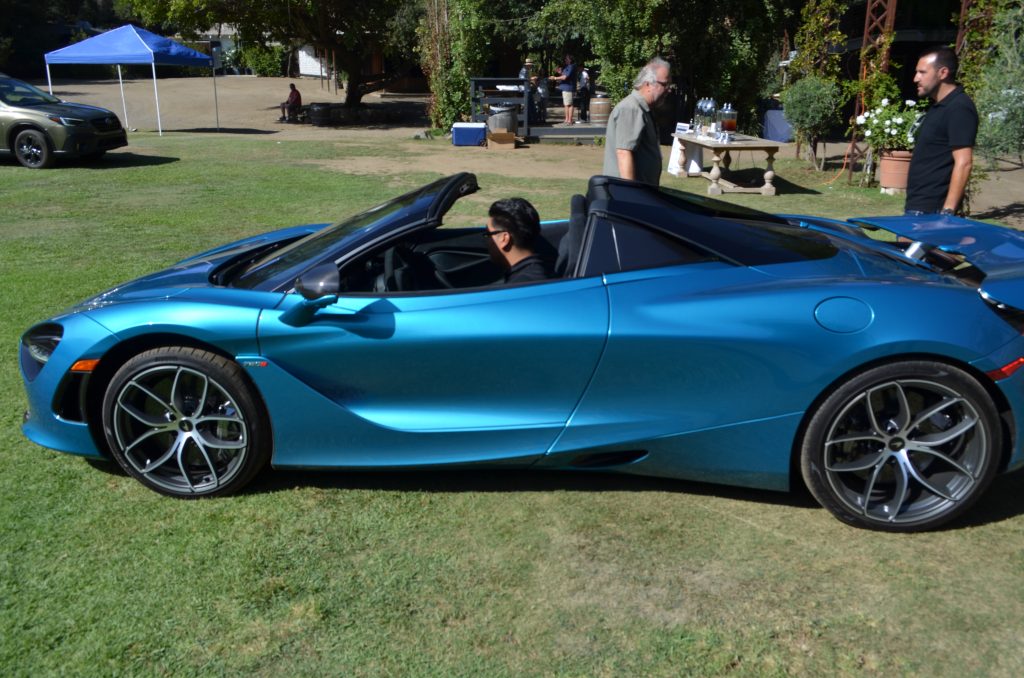
And that’s precisely where the influence of the first-gen NSX really shines through in this McLaren. The Woking, England-based racing powerhouse’s first road car, the F1, was one of the most revolutionary cars of the 20th century. It spared no expense. Gold foil for its superior heat reflectivity. Driver in the middle for optimal line of site (two jump seats for passengers to either side of, and behind, the driver). A BMW M-built, twin-sequential turbocharged V12 that was easily one of the finest combustion engines ever made and pure sonic artistry; it made insane power and offered throttle-controlled precision if you had the balls – and means – to let it loose. It had the now-famous dihedral butterfly doors. Aluminum chassis and bodywork. Driver seated in the middle for optimal view, with room for two others – to his Southeast and Southwest. To drive an F1 unrestricted is definitely bucket list stuff for enthusiasts. But the F1 was also a thoroughbred in the old-school sense, so rare and obviously collectible that you wouldn’t dare expect it to behave in town, let alone be crazy enough to drive it through traffic. There was no A/C. A heavy clutch. And you’d soon have a sore arm from shifting that precise but heavy stickshift. Too hardcore, maybe, for more than occasional use, and even upon its debut, definitely too museum-worthy.

The original NSX really shined in McLaren’s second phase of taking a stab at road cars. Their first effort, the awkwardly-named MP4-12C (later simplified to “12C”), was very good and brilliantly engineered, but ultimately didn’t feel special. Its styling was swoopy but kind of generic. It was conservative-looking, even, almost ’90’s Japanese in its approach. Its infotainment system was slow and frustrating, not on par with the resources Ferrari or Porsche could put into theirs. Its dual clutch was kind of slow-witted, even in racy modes. Yet it was fast, made great sounds, and it pioneered the McLaren drive mode selector, where the character of the car could be changed with the precise click of a rotating knob. Still, it felt kind of like a super high-performance appliance, and perhaps the NSX suffered from the same ultimate fate. The 12C, then: Great engine, great handling, great noises, but overall, no relish – it was good, but good is more than expected at $150K.

Photo By M 93, CC BY-SA 3.0 de, https://commons.wikimedia.org/w/index.php?curid=20972727
Nonetheless, trading on the McLaren F1’s legendary reputation and the company’s success in Forumla1, it still sold. Nonetheless, the criticisms were heard – apparently loud and clear. For its next efforts, the company wisely adjusted course, using the great mechanical underpinnings of the 12C to develop the 500- and 600- series cars, and eventually sink millions of pounds into the development of experimental masterpieces like the bonkers, hybrid-electric P1.
The current evolution of McLaren’s more “attainable” efforts, the 570S and 600-series cars and the stunning new GT, now feel and look the part. Are they as achingly gorgeous as Ferrari’s best? To me, no, but they’re damn close – McLaren evolved the basic lines of the 12C into cars that look truly exotic, into cars that promise an experience and very much deliver.
The mid-range (“Super Series” in McLaren-speak) 720S tested here starts at just under $300K. The 720 supplements one of the most impressive cars I’ve ever had the pleasure of thrashing on public roads, the 650S (luckily, our course around Greenwich, CT involved plenty of medium-radius, descending curves to downshift and rip that sweet turbo V8). One of the unique things about these cars was the use of GM’s magnetorheological (magnetic) dampers – a truly game-changing technology that perhaps we don’t give GM enough credit for. These dampers adjust their chemical consistency in 100 milliseconds, enabling liberal compliance over terrible roads and incredibly firm body control when the pavement turns sporting. The road can change texture without notice, but these struts are whip smart; they can tailor themselves to the road surface on the fly. That makes Super Series McLarens exotic Swiss Army knives – they can handle almost any paved surface with aplomb. It’s actually an amazing thing; even on super low-profile, 35-series Pirelli P Zeros, this car will soak up bumps, haggard surfaces, even small potholes like you’d never expect.
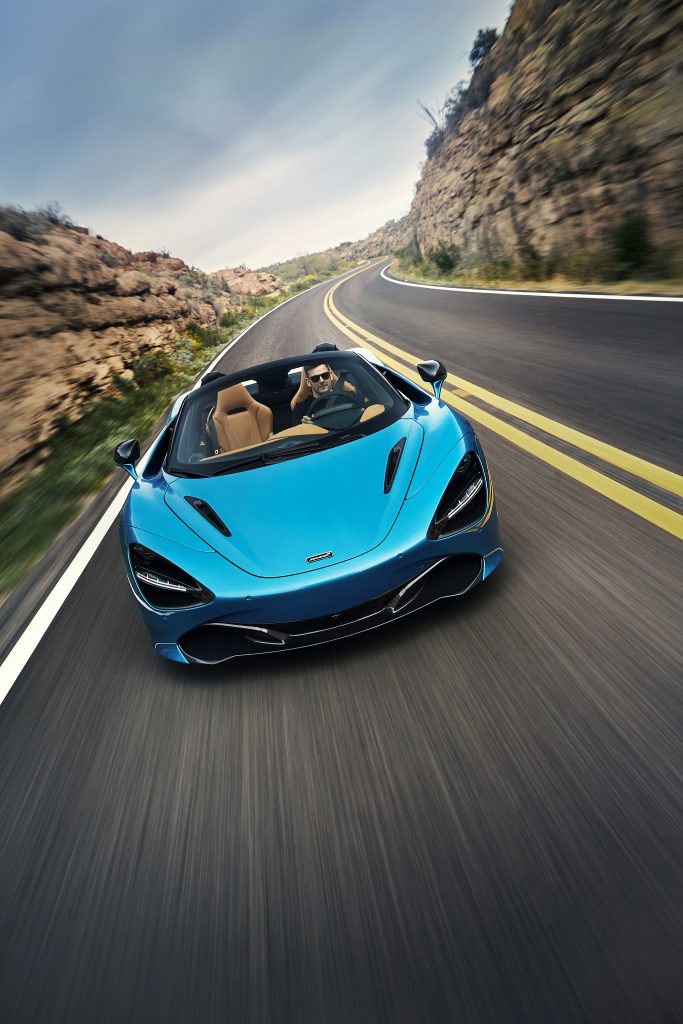
Courtesy McLaren (c) 2019
And if aural and visual drama is what you want, the 720 delivers in spades. To reiterate, McLaren has nailed the looks – it looks otherworldly and exotic, but also not derivative of the Italians or Aston Martin. It’s its own thing, and to me, the 720 is the handsomest and most thoughtful execution of McLaren’s design language – aside from perhaps the new GT. It hauls ass and it clears its throat with hot sauce. Those flashy dihedral doors are mostly self-opening – just tap the keyfob or press a cleverly obscured button just above the air intake. And on the coupe and, surprisingly, the Spider, McLaren blacked out the canopy, making it look even lower profile than it is. The 720 even employs tasteful blacked-out trim on the front air dam, too, which looks amazing when offset against the many vivid (read: LOUD) colors you can order this puppy clothed in. It not only takes what worked about late model McLaren design language, it updates it to be much more exotic-looking than the predecessor 650, and especially the kind of bland 12C. No, this 720 looks the part: menacing, low, long, aggressive.
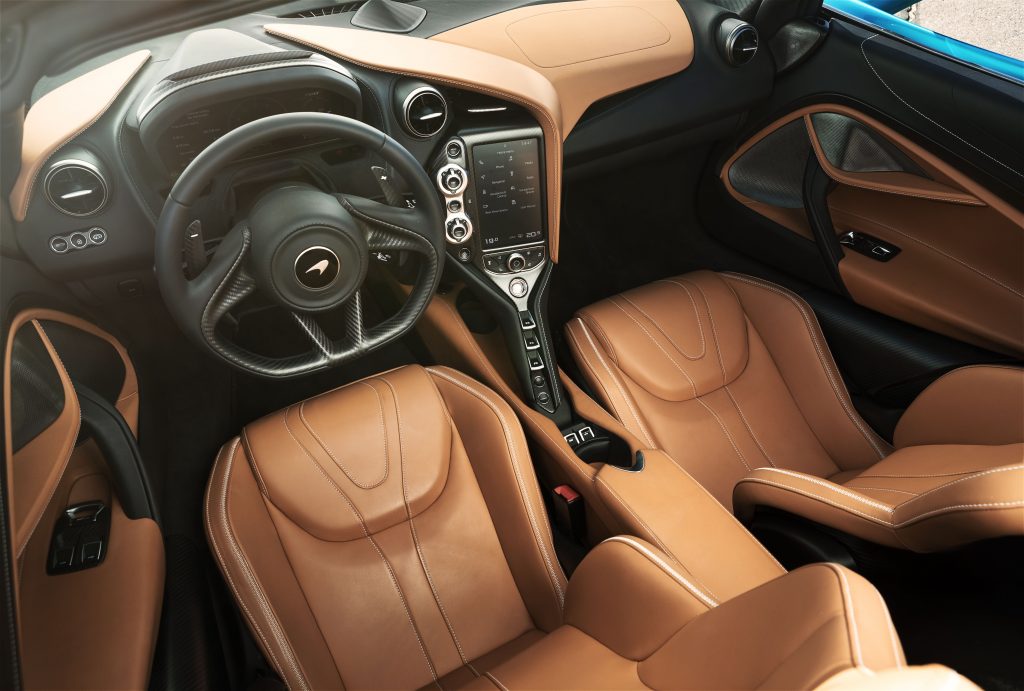
And if aggressive is the driving style you desire, McLaren gives you plenty to work with here, but they wisely made you work for it. Unlike some overwrought exotics of yore, the 720 won’t embarrass you in town, as long as you’re in Comfort or Sport modes, at least. Not only because of those trick electromagnetic shocks and the button to raise the front air dam to avoid scuffing, but also because of how they wisely designed the go pedal. To the uninitiated, it can seem like something is wrong with the car at first – why won’t it go?! – until you discover how the engineers thought of the practical; “what if you’re just tooling about?” The genius here is the subtle, distinctly notched detents in the gas pedal, making sure the driver won’t embarrass herself as she enters the Safeway parking lot. These notches provide a sort of retarding action to the throttle sensitivity, a smart trick to avoid pressing down only moderately and setting off an unintended blast of fireworks.
And when one does push past these detents, the boil will gradually come on until you’re two or three little clicks deep and suddenly full belching dragon fury of this powertrain can be unleashed. Speaking of which, if you’ve read this far already, you’ll know that the 720S obviously isn’t hurting for much in the ‘ol departmento de propulsion. Feel free to salivate to the deets: two sequential turbos strapped to an F1-derived, 4.0L V8. 710 hp. Yes, you read that right – Seven–hundred. And Ten. Torque ain’t a slouch either, with 568 lb.-ft., produced low in the rev range, as God intended, rasping out a deep-chested bellow that somehow sounds both brutal and technical at the same time. All fed to one of the best double-clutch automatics in the business. You’ll get seven forward speeds from the this ‘box, the programming schedule fully remapped when mode-shifting from “Comfort” to “Sport” or “Track.” Sport and Track are indeed different, with Track being super taut, hunkering this English missile down to the mounts of its adjustable air suspension. But it’s the 95% of driving you’ll likely do on public roads to which Comfort mode seems perfectly suited, the magnetic shocks working magic over all but the absolute worst potholes, expansion joints, crumbling pavement. The 720S is so planted and so agile for something that can literally torch the asphalt that you’ll be able to barnstorm country backroads with nary a worrisome thought; there’s excellent feel and feedback for an electric rack. Flick your wrist and the front end will tuck right the hell in, the car absolutely laughing off hairpins at extralegal speeds. Twist the knob a step further into “Sport” and you’ll instantly be rewarded with more throat-clearing, fireworks-popping braggadocio and deep, bellowy dragon noises every time you let off the throttle. And because the drive mode selector is a physical switch, the 720 will remember where you left off next time; you know, for when you’re exiting the Safeway parking lot.
The 720 Spider, driven here, is the one to get. It weighs just a touch more than the coupe; but at just over 3200 lbs. wet, it is by today’s standards extremely light for a car packing a big honking V8 and all the associated plumbing of twin turbocharging, modern electronics, and safety gear. Credit that carbon fiber monocoque tub. The Spider sports a trick, rapid-folding hardtop that retracts in only a few seconds, storing entirely unseen behind the roll bar hoops and just ahead of that museum-worthy V8 exhibit at the ass end. Yes, you can come through roofless on the fly if you so desire, in case you live in one of our country’s more indecisive climates. And then there’s the icing: the 720 is one of the most wild-looking exotics available today, at any price; the fact that it looks better with its top down than up stands in stark contrast to, say, the AMG GTC or any of the 911 Cabriolet variants.
Despite living through global pandemic bizzaro-world, along with West Coast wildfires that sadly seem a new, permanent fixture – a bleak time – this scribe, for one, is happy cars like the McLaren exist. We’ve been hearing forever that these cars are dinosaurs, an endangered species not long for this world of increasingly low sound emissions mandates and the EU’s new noise ordinances. We’ve been told to snap ‘em up now before it’s too late.
But every year, these beasts keep gaining more in refinement, more in blistering performance, more in control-your-own adventure drive modes; more Dr. Jekyl to Mr. Hyde, er, vice ersa. You get the point – despite all manner of modern headwinds, this class of cars, like most cars in general, keep getting better. Perhaps easier to pull off at this Spider’s nearly $400K price tag, yes. And is this 720S, by definition, superfluous? Clearly. I mean it has Russ Hanneman doors.* Is it a good choice for anything remotely practical? You crazy, ese?! Not in a million years. Oh, don’t get us wrong, this ain’t your Uncle’s old 375. The Mac can handle the grocery-getting or private school drop-off with nary a complaint. There’s a switch to electrically raise the front air dam in but a click or two so you don’t look like a complete asshole, dragging the front of a nearly-half million dollar car along as you try to merge into traffic. That the 720 can do these things without breaking a sweat is a testament to how far exotic or, if you wish – hyper – cars have come since that original Acura masterpiece.
No, you shouldn’t use the McLaren for everyday chores because you’ll look like a douche, what with the barking exhaust as you putter along in traffic, the butterfly doors peacocking your presence for miles around. It’s cute to think about when you’re a child – yes, making sure everyone knows you have fuck you money! Fun!! But, my friends, this dream machine wasn’t meant for such plebeian tasks. It was meant to blitz a .01 second faster lap time on VIR in scorching July heat, the climate control keeping you perfectly comfy; it was meant to crank up the switchback canyons of Malibu with eye-popping sound and fury; it was meant parade through Monaco top-down at the height of the summer.
And that’s why this car is so special, so good at pulling the heartstrings of the little kid in all of us. Is it perfect? No. But it’s damn close, closer than most have ever come. After all, life is short; we should enjoy every day we can in whatever way we prefer. And this car helps you enjoy life like few others. We’re happy the McLaren exists. Very, very happy.
-BD
[BD1]